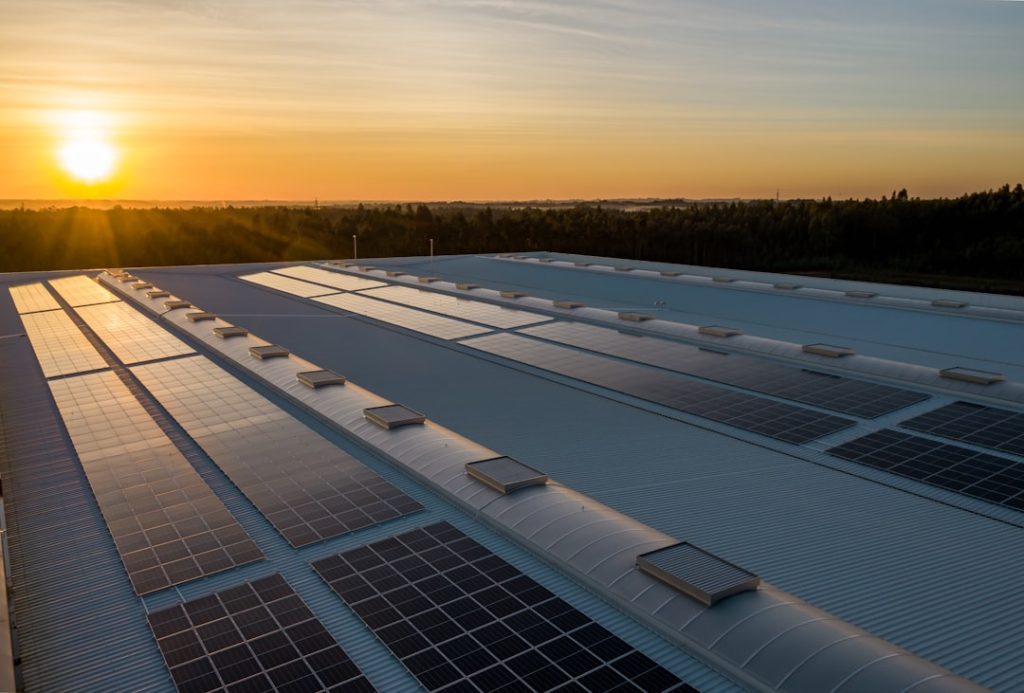Afghanistan, a country known for its rugged terrain and harsh climate, has long struggled with providing reliable and sustainable energy to its population. With a majority of its citizens living in rural areas, access to electricity is limited, and the existing infrastructure is inadequate to meet the growing demand for power. In recent years, the Afghan government, in collaboration with international organizations and private investors, has been working towards developing sustainable energy sources to address the country’s energy needs. The focus has been on harnessing renewable energy sources such as solar, wind, hydroelectric, biogas, and biomass to provide clean and reliable power to the population. This shift towards sustainable energy not only aims to improve the quality of life for Afghans but also to reduce the country’s reliance on imported fossil fuels and mitigate the environmental impact of traditional energy sources.
The development of sustainable energy in Afghanistan is crucial for the country’s economic growth and social development. With a rapidly growing population and increasing urbanization, the demand for electricity is on the rise. However, the existing energy infrastructure is outdated and insufficient to meet the needs of the population. This has led to widespread energy shortages, particularly in rural areas, where access to electricity is limited. The reliance on imported fossil fuels also poses a significant economic burden on the country, as it contributes to trade deficits and drains valuable resources. By transitioning towards sustainable energy sources, Afghanistan aims to improve energy security, reduce greenhouse gas emissions, and create new opportunities for economic growth and job creation in the renewable energy sector.
Solar Energy as a Promising Source of Power
Solar energy has emerged as a promising source of power in Afghanistan due to its abundant sunlight and vast untapped potential. The country experiences over 300 days of sunshine per year, making it an ideal location for solar power generation. The government, in collaboration with international organizations, has been investing in solar energy projects to provide electricity to remote and off-grid communities. Solar panels are being installed in rural areas to power homes, schools, and healthcare facilities, improving the quality of life for thousands of Afghans. Additionally, solar energy is being integrated into the national grid to supplement traditional power sources and reduce the reliance on imported fossil fuels.
The adoption of solar energy in Afghanistan has the potential to transform the country’s energy landscape by providing clean and sustainable power to its citizens. The abundance of sunlight makes solar energy a reliable source of electricity, especially in remote areas where access to the grid is limited. Furthermore, the development of solar power projects creates new opportunities for job creation and economic growth in the renewable energy sector. As technology advances and costs continue to decrease, solar energy is becoming increasingly accessible and affordable for both residential and commercial use. With the right policies and investments, solar energy can play a significant role in meeting Afghanistan’s growing energy demand while reducing its carbon footprint.
Wind Energy Potential in Afghanistan
In addition to solar energy, Afghanistan also possesses significant potential for harnessing wind power as a sustainable energy source. The country’s mountainous terrain and open plains create favorable conditions for wind energy generation. Wind farms have been established in various regions of Afghanistan to capture the strong winds and convert them into electricity. These wind power projects not only contribute to the country’s energy supply but also help diversify the sources of power generation. By tapping into its wind energy potential, Afghanistan can reduce its reliance on imported fossil fuels and strengthen its energy security.
The development of wind energy in Afghanistan presents an opportunity to expand the country’s renewable energy portfolio and contribute to its sustainable development goals. Wind power projects have the potential to provide electricity to remote communities that are not connected to the national grid, improving their access to modern amenities and services. Furthermore, wind energy can help mitigate the environmental impact of traditional power sources by reducing greenhouse gas emissions and air pollution. As technology continues to advance, wind turbines are becoming more efficient and cost-effective, making wind energy an attractive option for meeting Afghanistan’s growing energy needs.
Hydroelectric Power and its Role in Sustainable Energy
“`html
| Country | Hydroelectric Capacity (MW) | Percentage of Total Electricity |
|---|---|---|
| China | 352,000 | 17% |
| Brazil | 103,000 | 64% |
| Canada | 81,000 | 60% |
| United States | 80,000 | 7% |
“`
Afghanistan’s abundant rivers and water resources present a significant opportunity for harnessing hydroelectric power as a sustainable energy source. The country is home to several major rivers, including the Kabul River, Helmand River, and Amu Darya River, which have the potential to support large-scale hydroelectric projects. The government has been investing in the development of hydroelectric dams to generate clean electricity and reduce the country’s dependence on imported fossil fuels. These projects not only contribute to the national energy supply but also support irrigation, flood control, and water management initiatives.
The utilization of hydroelectric power in Afghanistan has the potential to transform the country’s energy sector by providing a reliable and renewable source of electricity. Large-scale hydroelectric dams can generate significant amounts of power, which can be distributed across the country through the national grid. This can help address the chronic energy shortages in rural areas and improve access to electricity for millions of Afghans. Furthermore, hydroelectric power is a clean and sustainable energy source that can help reduce greenhouse gas emissions and mitigate the environmental impact of traditional power generation. By tapping into its hydroelectric potential, Afghanistan can achieve greater energy security and support its economic development goals.
Biogas and Biomass as Renewable Energy Sources
In addition to solar, wind, and hydroelectric power, biogas and biomass have emerged as renewable energy sources with significant potential in Afghanistan. Biogas is produced from organic waste such as animal manure and agricultural residues through a process called anaerobic digestion. This biogas can be used for cooking, heating, and electricity generation, providing a clean and sustainable alternative to traditional fuels such as wood and charcoal. Similarly, biomass refers to organic materials such as crop residues, wood chips, and animal waste that can be converted into biofuels or used directly for heating and power generation.
The adoption of biogas and biomass as renewable energy sources in Afghanistan presents an opportunity to address multiple challenges related to energy access, environmental sustainability, and rural development. By utilizing organic waste for energy production, biogas and biomass projects can help reduce deforestation, improve indoor air quality, and provide clean cooking solutions for rural households. Additionally, these renewable energy sources can contribute to decentralized power generation, particularly in off-grid areas where access to electricity is limited. The development of biogas and biomass projects can also create new opportunities for income generation and job creation in rural communities, supporting sustainable development goals in Afghanistan.
Government Initiatives and Policies for Sustainable Energy

The Afghan government has taken significant steps towards promoting sustainable energy development through various initiatives and policies aimed at accelerating the adoption of renewable energy sources. The National Energy Strategy outlines the country’s vision for achieving universal access to electricity through a combination of renewable energy projects, grid expansion, and energy efficiency measures. The government has also established regulatory frameworks and incentives to attract private investment in sustainable energy projects, including tax incentives, feed-in tariffs, and public-private partnerships.
Furthermore, Afghanistan has been working closely with international organizations such as the World Bank, Asian Development Bank, and United Nations Development Programme to secure funding for sustainable energy initiatives and capacity-building programs. These partnerships have supported the development of solar, wind, hydroelectric, biogas, and biomass projects across the country, contributing to improved energy access and environmental sustainability. Additionally, the government has been investing in research and development initiatives to advance renewable energy technologies and promote innovation in the sector.
Challenges and Opportunities for Sustainable Energy Development in Afghanistan
While Afghanistan has made significant progress in promoting sustainable energy development, several challenges remain that need to be addressed to fully realize the potential of renewable energy sources in the country. Limited access to financing and investment capital poses a significant barrier to scaling up renewable energy projects, particularly in remote and underserved areas. Additionally, technical capacity constraints and a lack of skilled labor present challenges for implementing and maintaining sustainable energy infrastructure.
However, these challenges also present opportunities for innovation and collaboration in the renewable energy sector. By leveraging public-private partnerships and international cooperation, Afghanistan can overcome barriers related to financing, capacity building, and technology transfer. The growing demand for clean and reliable electricity presents an opportunity for private investors to participate in sustainable energy projects that can deliver both financial returns and social impact. Furthermore, advancements in renewable energy technologies offer new possibilities for decentralized power generation and off-grid solutions that can benefit rural communities.
In conclusion, sustainable energy development holds great promise for addressing Afghanistan’s energy needs while contributing to economic growth, environmental sustainability, and social development. By harnessing its abundant solar, wind, hydroelectric, biogas, and biomass resources, Afghanistan can improve access to clean electricity for its citizens while reducing its reliance on imported fossil fuels. The government’s initiatives and policies aimed at promoting sustainable energy are crucial for creating an enabling environment for private investment and innovation in the sector. While challenges exist, they also present opportunities for collaboration and advancement in renewable energy technologies that can benefit all segments of Afghan society.
For more information on sustainable energy industry trends in Afghanistan, you can read the article “Saving Energy in Afghanistan: Conservation Programs” on Almassiyah. This article discusses the various conservation programs and initiatives aimed at promoting energy efficiency and sustainability in Afghanistan. It provides insights into the efforts being made to reduce energy consumption and promote a cleaner environment in the country.



